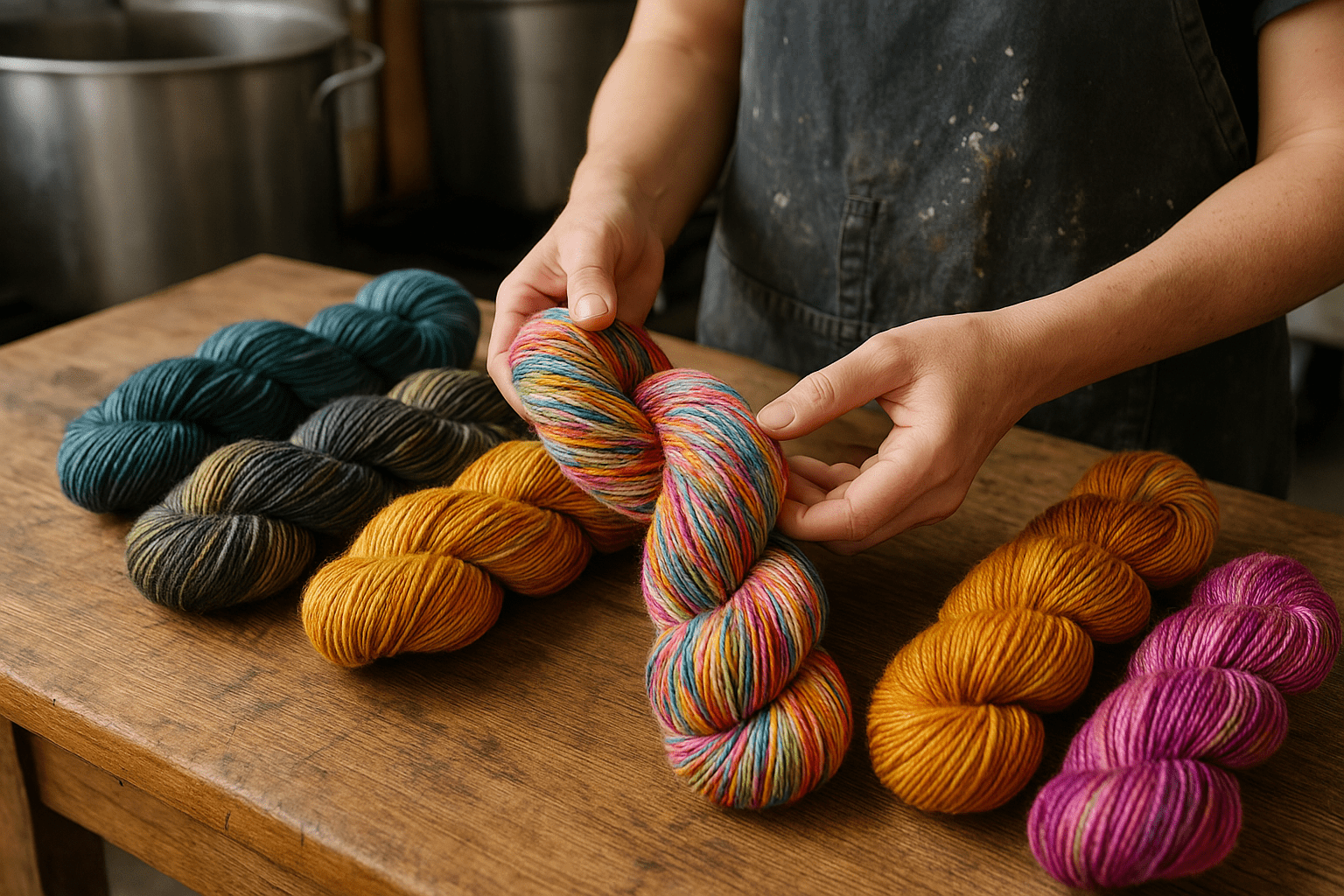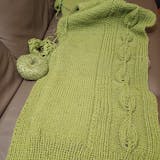Every ball a work of art: The magic of hand-dyed yarns
There are yarns – and then there are yarns that tell stories . Hand-dyed yarns belong to the second category. They are like small works of art: unrepeatable. Personal. Lively. And once you've knitted them, you'll feel the difference stitch by stitch.
What makes hand-dyed yarns special?
Hand-dyed yarns are the textile equivalent of hand-stirred chocolate or wine from a small winery: made with love, precision, and experience – in small batches, with true craftsmanship. Not industrially produced, but color with character.
Each batch is unique.
Because it's dyed by hand, no two batches are exactly alike. Even with the same dye formula, subtle nuances and surprising color gradients emerge. It's precisely this imperfection that is its beauty—and its magic.
Multidimensional colors.
Machine-dyed yarns often have a flat, one-dimensional look. Hand-dyed yarns, on the other hand, shimmer and change, playing with light and depth. The color application is deliberately varied, creating a vibrancy that no machine can replicate.
How is hand-dyed yarn made?
1. The basis
It all begins with the choice of raw wool. Many hand-dyers work with particularly high-quality yarn bases – from soft merino wool to luxurious silk blends to robust linen. The base determines how the dye is absorbed – and how the yarn will feel later.
2. The coloring
Dyeing is done in small batches—usually by hand in pots or basins. Different techniques are used:
• Acid dyeing: For bright, intense colors
• Hand painting: Colors are applied as if with a brush
• Speckling: small speckles of color that create vibrant effects
• Dip-Dye & Gradient: Color gradients and ombre effects
3. Fixing & drying
After dyeing, the yarn is fixed (usually with heat and vinegar water), then carefully washed by hand and air-dried. Every detail counts – this is the only way to ensure the colors remain brilliant and long-lasting.
Why are hand-dyed yarns more expensive?
Because every minute counts . Hand dyeing is labor-intensive, time-consuming, and requires experience. Dyers spend hours standing at the pots, checking temperatures, stirring, waiting, rinsing, and hanging. In addition,
• Small batches = no economies of scale
• High-quality yarn bases
• Artistic work, not an assembly line job
• Individual development of each color
What you pay for is not just a strand – it is the result of talent, craftsmanship, passion.
The tradition behind hand dyeing
Yarns were dyed by hand for thousands of years – using plants, minerals, and later synthetic dyes. The knowledge was passed down from generation to generation long before machines took over.
Today, hand-dyeing is experiencing a revival—not only for aesthetic reasons, but also as a conscious countermovement to the mass market. It stands for:
• Creative freedom
• sustainability
• Respect for material & time
• Individuality instead of conformity
What does this mean for you as a knitter?
A hand-dyed yarn is more than just a material. It's a creative collaboration – between you and the dyer. Between technique and intuition. Between color and form.
Tip:
Knit with two strands alternating when working on large projects—this will balance out any color differences. And enjoy the play of colors—it's part of the magic.
Conclusion:
When you work with hand-dyed yarn, you are not just knitting a garment.
You're knitting a statement. Against mediocrity. For the real thing.






For the masters of stitches: 9 knitting tips for advanced and professional knitters
Machine-dyed yarns – why we recommend them with a clear conscience